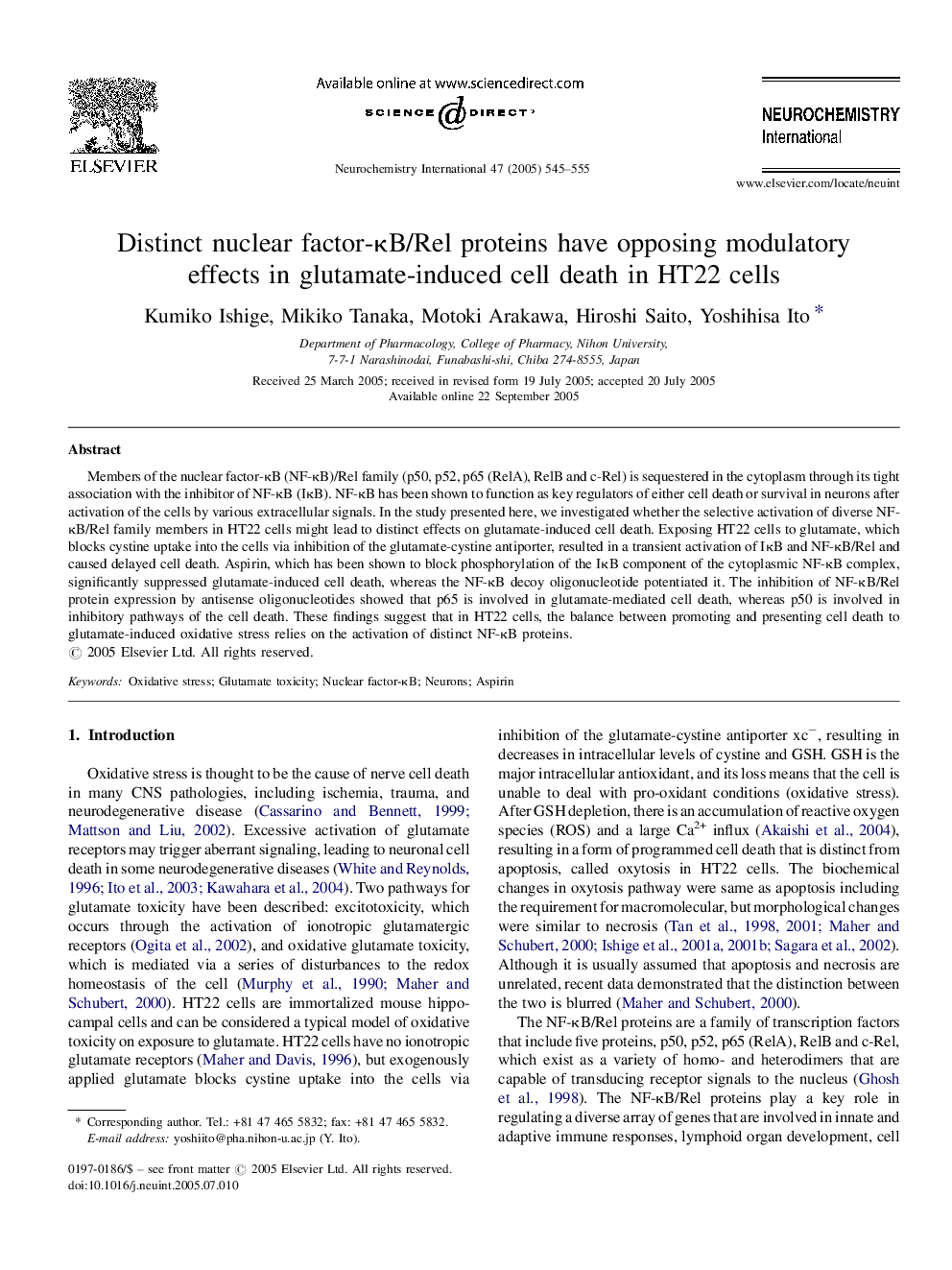| Article ID | Journal | Published Year | Pages | File Type |
|---|---|---|---|---|
| 10958430 | Neurochemistry International | 2005 | 11 Pages |
Abstract
Members of the nuclear factor-κB (NF-κB)/Rel family (p50, p52, p65 (RelA), RelB and c-Rel) is sequestered in the cytoplasm through its tight association with the inhibitor of NF-κB (IκB). NF-κB has been shown to function as key regulators of either cell death or survival in neurons after activation of the cells by various extracellular signals. In the study presented here, we investigated whether the selective activation of diverse NF-κB/Rel family members in HT22 cells might lead to distinct effects on glutamate-induced cell death. Exposing HT22 cells to glutamate, which blocks cystine uptake into the cells via inhibition of the glutamate-cystine antiporter, resulted in a transient activation of IκB and NF-κB/Rel and caused delayed cell death. Aspirin, which has been shown to block phosphorylation of the IκB component of the cytoplasmic NF-κB complex, significantly suppressed glutamate-induced cell death, whereas the NF-κB decoy oligonucleotide potentiated it. The inhibition of NF-κB/Rel protein expression by antisense oligonucleotides showed that p65 is involved in glutamate-mediated cell death, whereas p50 is involved in inhibitory pathways of the cell death. These findings suggest that in HT22 cells, the balance between promoting and presenting cell death to glutamate-induced oxidative stress relies on the activation of distinct NF-κB proteins.
Related Topics
Life Sciences
Biochemistry, Genetics and Molecular Biology
Cell Biology
Authors
Kumiko Ishige, Mikiko Tanaka, Motoki Arakawa, Hiroshi Saito, Yoshihisa Ito,
